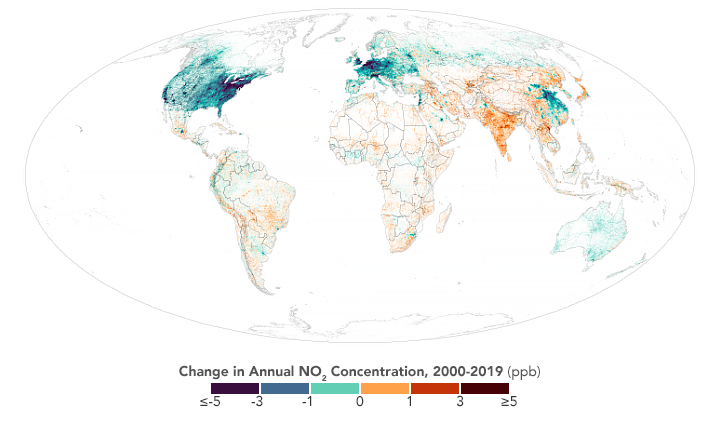Gepubliceerd op 22 april 2022
NASA-funded scientists have, for the first time, connected health outcomes in cities around the world to satellite and ground-based data on air pollution. The researchers concluded that despite improvements in some parts of the world and for certain pollutants, air quality continues to be an important contributor to disease. Mitigating pollution is crucial to public health, especially for children, who can be particularly susceptible to respiratory diseases such as asthma.“Nearly everyone in any city around the world is exposed to air that has harmful levels of air pollution in it,” said lead author Susan C. Anenberg, an associate professor of global health at the George Washington University and a member of NASA's Health and Air Quality Applied Sciences team.
Globally, air pollution is the fourth leading risk factor for death. Some pollutants are concentrated around urban areas, where about half the world’s population lives. In highly developed countries, closer to 80 percent of the population lives in urban areas. “We know that air pollution and population are both co-located in urban areas,” Anenberg said, “but we’ve never before had estimates of the burden of disease from air pollution in cities around the world.”
The studies by Anenberg and colleagues focused on nitrogen dioxide (NO2) and fine particulate matter (PM2.5). Nitrogen dioxide—which is largely produced by emissions from cars, trucks, and buses—is associated with the incidence of pediatric asthma. It is also a precursor to ozone and PM2.5—the leading cause of death related to air pollution.
Read the rest of the article
over on NASA's Earth Observatory website
